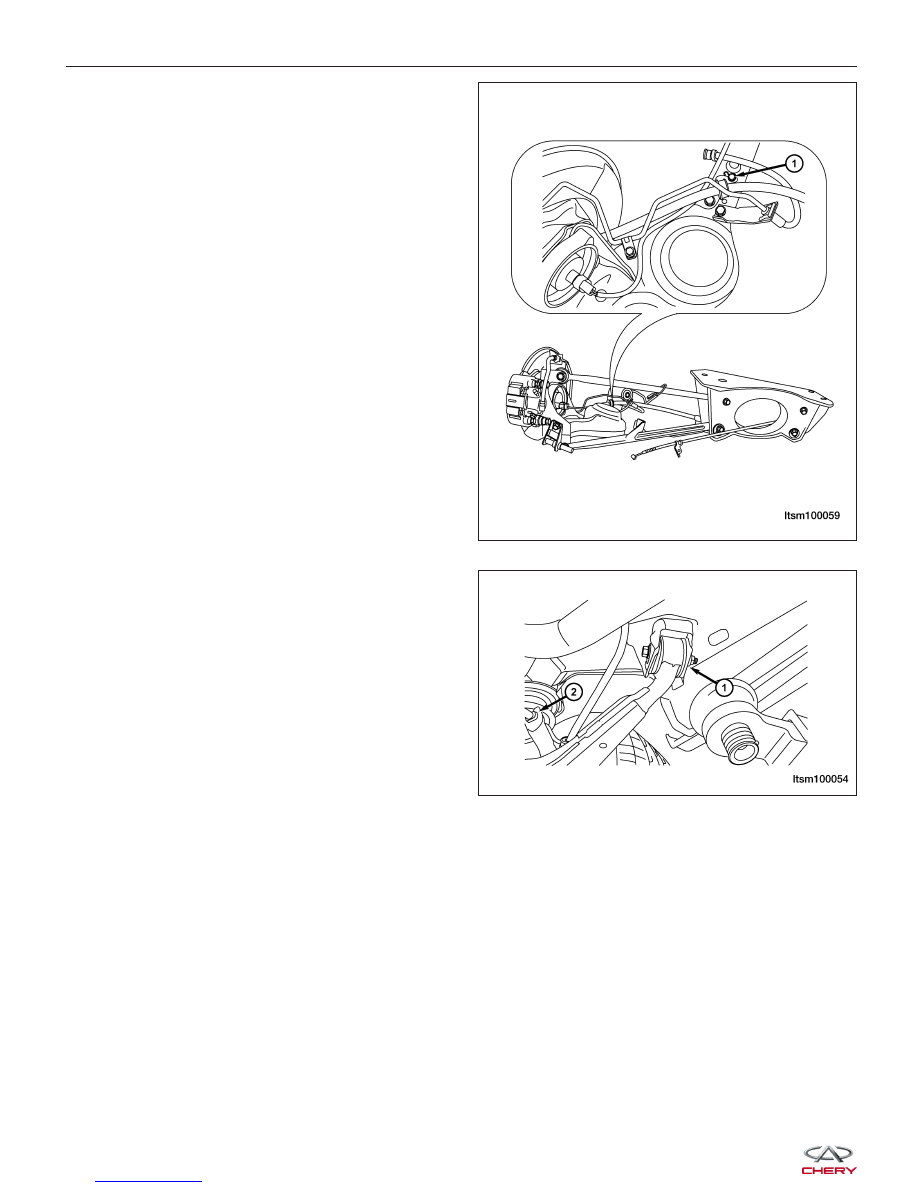Chery Tiggo. Manual - part 335

8. Remove the connecting bolt (1) that joins the rear
trailing arm to the hand brake cable bracket.
(Tighten:
Hand
brake
cable
bracket
bolt
to
25 - 35 N·m)
9. Remove the bolt (1) that joins the rear trailing arm
to the vehicle body.
10. Remove the brake fluid pipe clamp (2).
ON-VEHICLE SERVICE
LTSM100059
LTSM100054